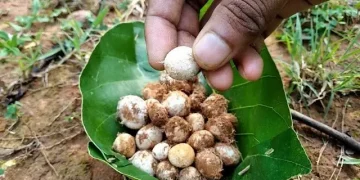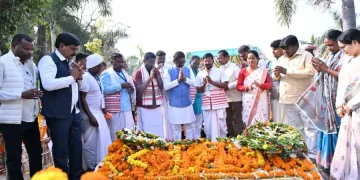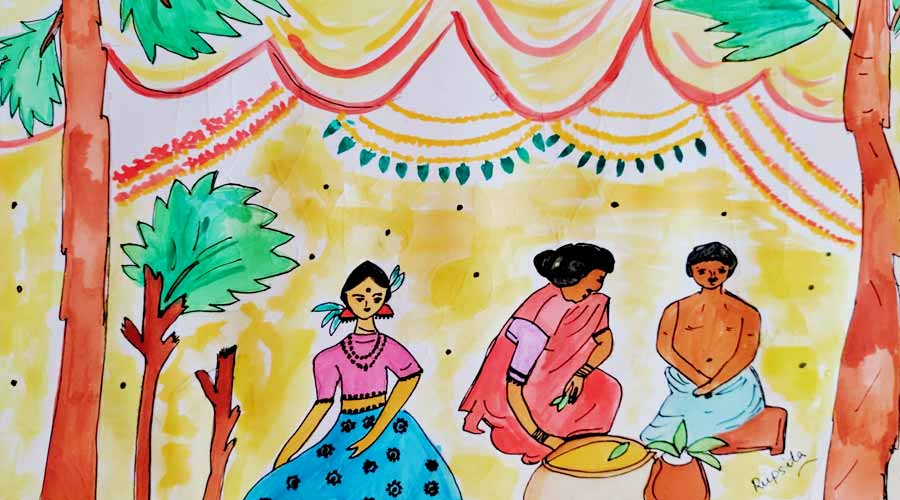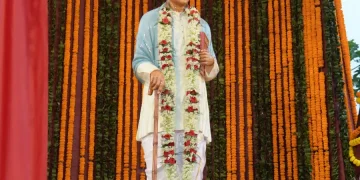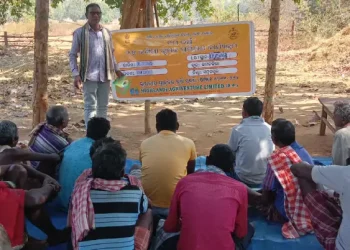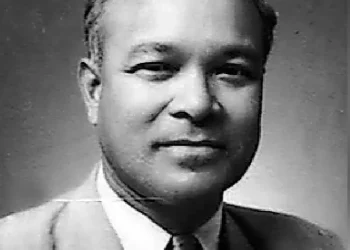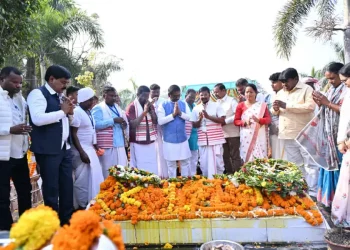There are a great many unusual and amusing ceremonies associated with various tribal marriages across India and the Majhi tribe of Nuapada, Odisha, has its own set.
A Majhi marriage is planned over four days. One the first day, a temporary pavilion is erected at the groom’s house comprising eight to 12 pillars with a canopy of leaves covering the enclosed space. Palm fronds or blackberry (jamun) branches are generally woven together for this roof.
In the centre of this space, two leafy mahua branches are stuck into the earth. The taller one signifies the groom, and the other, his bride. This is the jog deli — the spot of the union.
“Both branches are smeared with a paste of haldi (turmeric powder) and oil. Two mango leaves are used to daub the groom’s feet, shoulders and forehead with the same paste,” describes Ranjit Singh Maharatha, secretary of Sampark, an NGO that has been working to eradicate superstitious practices prevalent among the Adivasi. Maharatha is well-versed with the Majhi tribal marriage and lifestyle as he has worked closely with them.
Family members gather round for the rituals accompanied by the beats of dhol, tasha and nissan folk drums, along with (Mahuri) music, which is intrinsic to any tribal marriage.
One day two, the bridal cortege arrives, and festivities ensue. The girl spends that night at the kanya dera or bas, a hut separate from the main residence.
The actual marriage ceremony, lagna, takes place on the third day. A large earthen pot (handi) is filled with water, covered with the rounded leaves of palash (Butea monosperma) and set near the jog deli.
The groom’s father must sit on the handi. His wife sits in his lap. Then, the groom sits in the lap of his mother and takes his betrothed in his own lap.
The Majhis believe that if the combined burden of five people does not break the marriage handi, then the relationship will survive any amount of load and last long. The ritual may have a nuanced significance but causes hilarity among the onlookers at the moment.
The priest, or the lagnia, circles the handi, muttering incantations and sprinkling turmeric-mixed rice on the four people. Finally, the lagnia puts his weight on the shoulders of the groom’s father.
On day four, the jog deli is taken for immersion. “The procession includes the happy couple, kith and kin. All the guests smear haldi paste on each other before the immersion,” says Maharatha.

